The Corsair K63 Wireless Mechanical Keyboard Review: PC Gaming Untethered
by E. Fylladitakis on September 16, 2019 10:30 AM ESTThe Corsair K63 Wireless Mechanical Gaming Keyboard
Surprisingly, regardless of its name, the Corsair K63 is not based on the design of the K70/K90 series. Although there are accents that are reminiscent of the design of the now legendary K70, the K63 seems mostly based on the design of the STRAFE series instead, with the keyboard having a plastic frame instead of an aluminum top cover. So on the whole, the K63 looks like a mix of the STRAFE’s design but with the extra top area buttons and the wrist rest found on K-series keyboard.
The plastics that form the frame of the Corsair K63 are of great quality, with excellent rigidity and scratch resistance. The company’s logo and short push buttons are hosted on a narrow band right above the mechanical keys. Beneath the plastic frame, a colored steel plate secures the mechanical switches and the main PCB. The keycaps are made from ABS plastic and have large, futuristic characters, while the Space Bar key is textured. The surface of the Space Bar should also decay less easily, as Space Bar keys with their right side heavily worn out are a common phenomenon.
The Corsair K63 is a tenkeyless keyboard, the core layout of which does not fully adhere to the recommended ANSI layout. Compared to the standard ANSI layout that has a 6.25× Spacebar and seven 1.25× bottom row keys, the bottom row of the keyboard has a 6.5× Spacebar, two 1.25× ALT, two 1.5× CTRL, and three 1× WIN/Fn bottom row keys. This is the “gaming” layout that reduces the size of the “unnecessary” WIN/Fn keys in favor of the more useful CTRL/Spacebar keys. Corsair has been using this layout on all of their advanced keyboards.
Basic OS functions (back, home, switch, search) have been inserted as secondary commands in the F1-F4 keys, and are accessible by holding down the Fn key. Similarly, the keyboard’s connectivity is controlled via Fn + F9-F10 keystrokes. Fn + F12 is the sleep command. There is no volume control wheel as those found on the rest of the K-series keyboards but Corsair did install three volume control buttons (mute, volume down, volume up).
The bottom of the K63 is relatively basic, with four small anti-skid pads at the edges of the keyboards and two tilt adjustment rear feet. There are no anti-skid pads on the feet but the keyboard does not easily move while on a typical wooden desk. The tilt adjustment feet open sideways, so they will not accidentally close if the keyboard is pushed backwards.
On the rear side of the keyboard we can spot a small micro USB port for data and charging, and a small on/off switch. The small port is vulnerable to damage and the cable should always be removed if the keyboard is to be packed and transported, but care should also be taken not to force the connector while the keyboard rests on a desk.
Beneath the keycaps we spot genuine Cherry MX switches with blue LEDs. Corsair only offers the K63 with Cherry's MX Red switches, which are essentially the "baseline" switches for the company, offering a solid balance when it comes to linearity and responsiveness. Cherry’s cross-type supports can be spotted beneath the larger keys.
Despite its wireless design, Corsair used typical full power LEDs on the K63. As a result, the backlighting of the K63 is just as strong as that of most wired keyboards. Furthermore, as the backlighting is fixed, Corsair also dyed the steel plate with the exact same color as the LEDs. This creates a stunning visual effect, creating the illusion of perfectly uniform lighting surrounding each key.
Removing the covers of the Corsair K63 reveals the secondary PCBs, the rubber dome buttons and the battery of the keyboard. Corsair installed a cylindrical 2950 mAh CR18650 battery, which we're very happy to see. As this is a very common battery type that can be easily found with many electronics retailers, this will make it easy to find replacement parts in the future once the battery eventually requires replacement.
The heart of the keyboard is a NXP LPC11U68JBD100 microprocessor, an ARM Cortex-M0+ based chipset with a CPU frequency of 50 MHz, 256 kB Flash memory, 4 kB EEPROM and 36 kB SRAM. Corsair is using this particular chip on most of their advanced mechanical keyboards, not only because of its processing power but also because of its impressive internal flash memory.



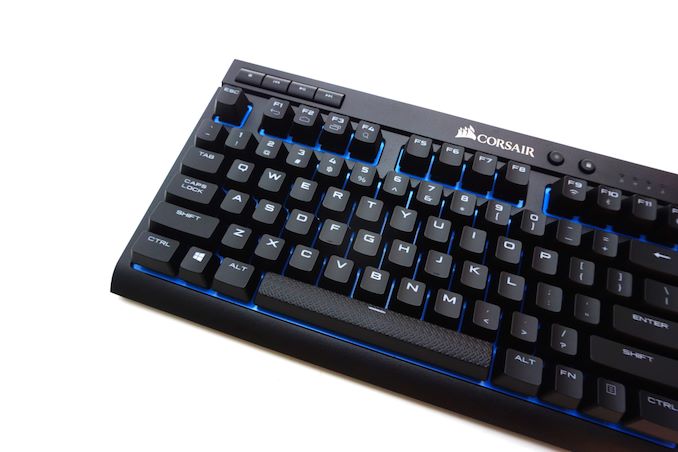
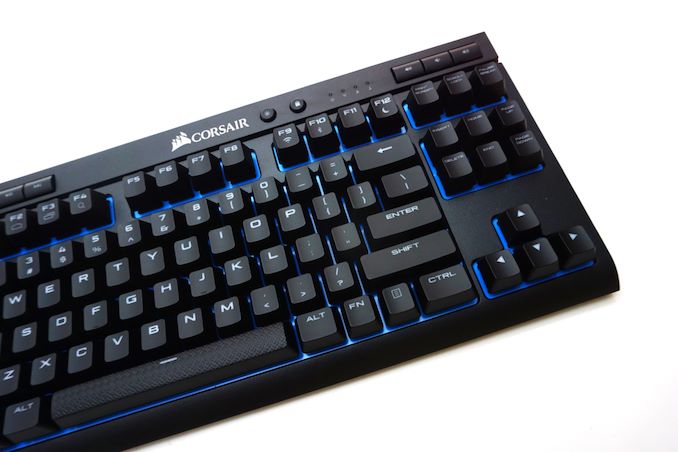
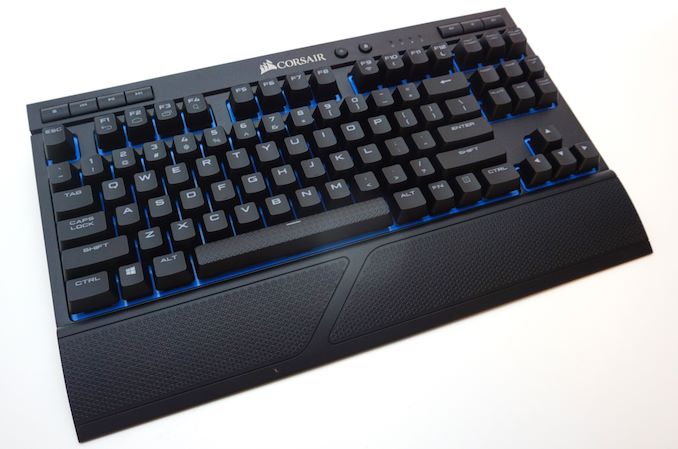
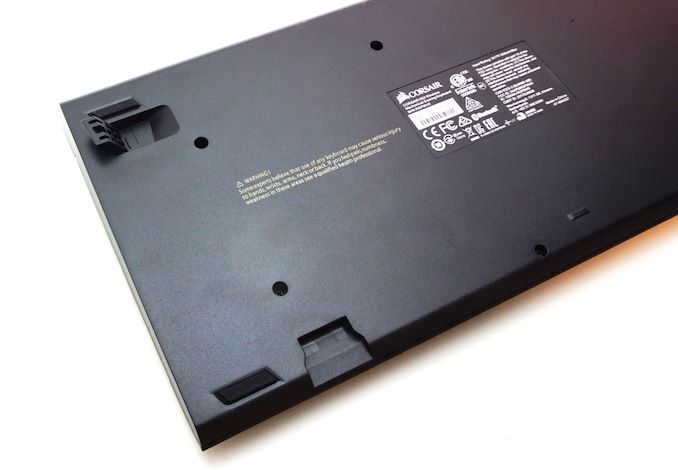
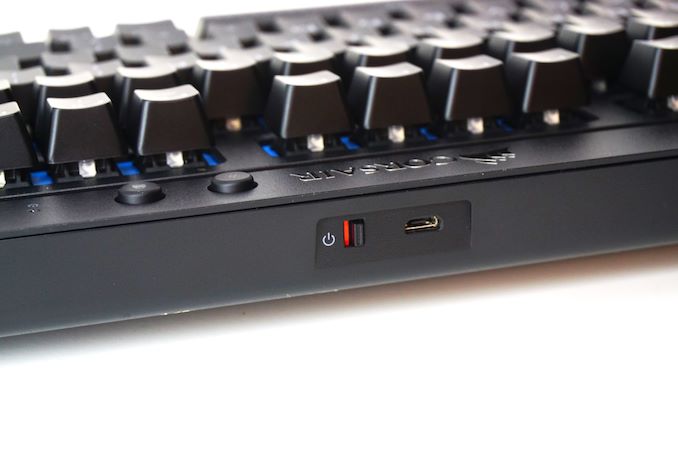
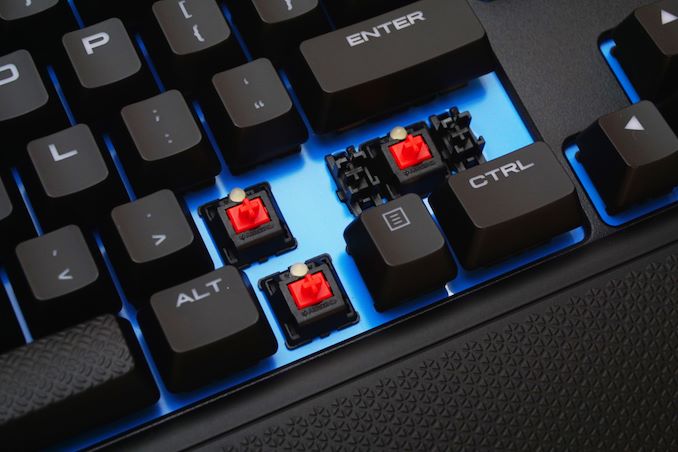
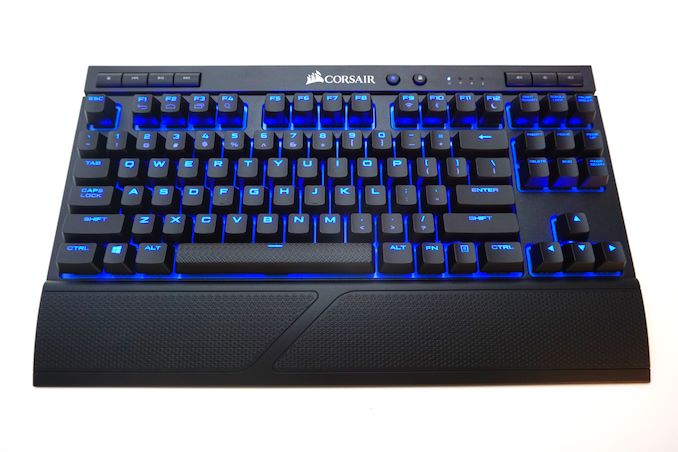
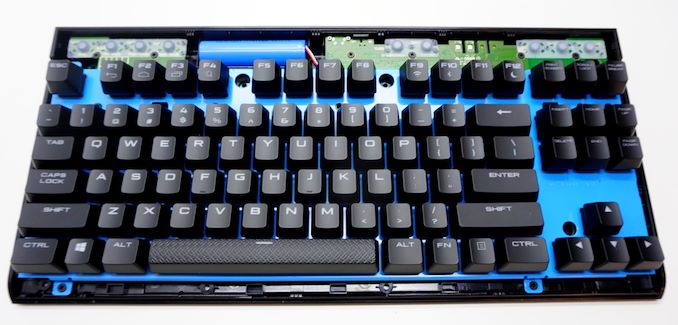
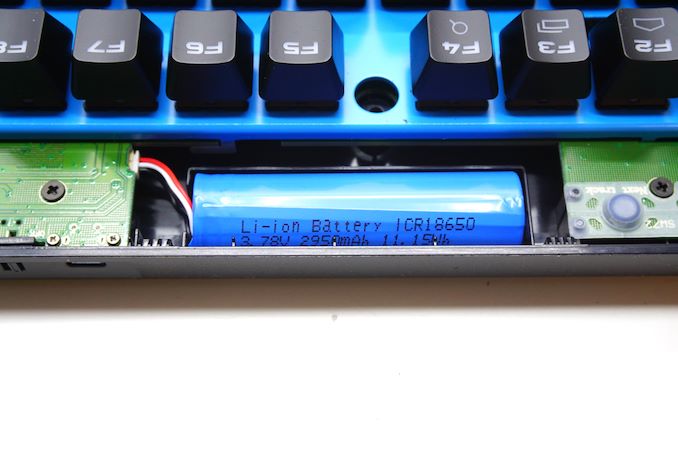
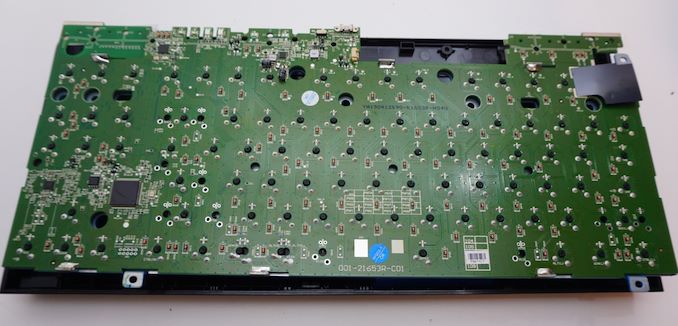
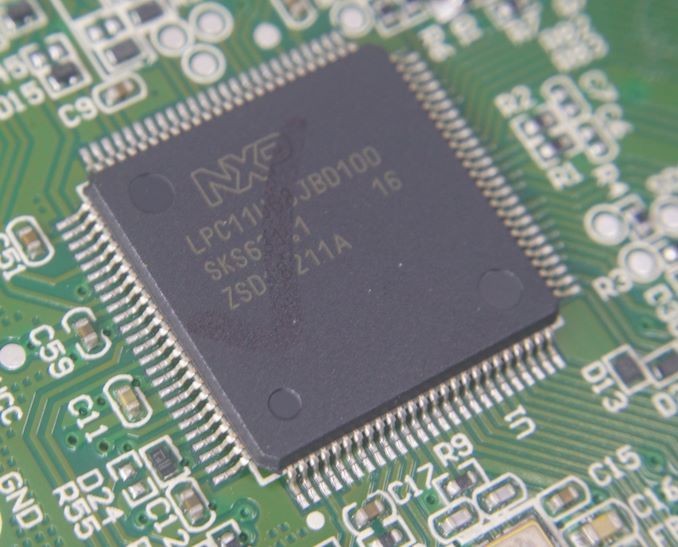









75 Comments
View All Comments
Lord of the Bored - Tuesday, September 17, 2019 - link
I'm annoyed by new devices adopting USB-C. It is a terrible connector from both a physical and electrical standpoint, and there's nothing wrong with MicroUSB.PeachNCream - Tuesday, September 17, 2019 - link
I like the fact that MicroUSB cables are designed to fail before the port on the device, but still, I do wish the port was a little more sturdy. I also wish there were slimmer or stubbier connectors that hugged up against phones. Even some the compact, 90-degree bend connectors protrude a few millimeters more than I'd like outward from a phone. Those gripes aside, MicroUSB has been perfectly reasonable as a connector standard.Jedi2155 - Wednesday, January 22, 2020 - link
I definitely had failed micro-USB ports on some phones (parents devices so I don't know 100% how it failed) so they definitely aren't always sturdy.MicroUSB was fine, but I much prefer the reversibility of USB-C.
catavalon21 - Tuesday, September 17, 2019 - link
It's tiny, and tiny doesn't go well when teenagers plug phones in to charge. Maybe a lousy implementation of the connectors themselves, but our family had 2 phones where the MicroUSB connector on the phone failed.piiman - Saturday, September 28, 2019 - link
This is not a new productbloodgain - Monday, September 16, 2019 - link
The K63 is not available with different switches. It is strictly a Cherry MX Red keyboard marketed toward gaming, though why they didn't install their "lag-free" SLIPSTREAM wireless solution in it, I don't know.More importantly, why are you reviewing a keyboard that was released nearly 3 years ago -- from what I gather from review dates on Amazon? Heck, I bought this with the compatible lapboard back in June because it had at least decent reviews and was one of the few solutions for couch K&M gaming/productivity available.
That is, unless the answer to both of these comments is that Corsair is about to start offering this with Brown switches. I might buy one and flip my Red if they did. But if that was the case, it seems like they would have shipped you a Brown switch review unit. So...?
MadAd - Monday, September 16, 2019 - link
Typing this on a K63 now, had it for a month and a half. As far as typing goes its adequate enough, seems a bit less positive tactile feel than the K60 (same reds, should be the same but its not) and the keys feel a weird shape, im still getting used to that. Its quite heavy even for a mechanical, oddly I was expecting less being 10keyless.My main issues with it is how I either have to have the LEDs super bright, or memorize the shifted key character positions as, for some stupid reason, Corsair chose to put the symbols _below_ the numbers on each number key (instead of like every other keyboard in the world having them above the numbers) and then poorly illuminate the character so you have to really blast the lighting to see them. The numbers are clearly illuminated however. Badly thought out IMO.
The software also has an annoying aspect, Why on earth would Corsair put the LED timeout setting in the damn global settings and not per profile? When I play a game I want the LEDs on all the time, when I'm on my desktop I want the keys to time out after 10 minutes. My fav game I play with Mouse and Controller with the keyboard containing the backup keys and typing into chat and its forever going off meaning I still have to guess keys in the dark, or have it on 24/7 on the desktop, or futz with the global setting every day before/after each game. Again another badly thought out aspect.
Overall id give it 6/10
pheno.menon - Monday, September 16, 2019 - link
Where did you see it on sale for $50? I think that may be referring to the wired-only version of this keyboard.Also, no mention or pictures of the Lapdock accessory for this keyboard in the article.
Ryan Smith - Thursday, September 19, 2019 - link
"Where did you see it on sale for $50? I think that may be referring to the wired-only version of this keyboard."D'oh!
You are correct. I'd like to pretend that this was all planned, but that's a dumb error on our part. When we went price hunting, the K63-non wired is what came up. So thank you for pointing that out.
The article has been updated accordingly.
Tchamber - Monday, September 16, 2019 - link
Why is it so hard to find an economic mechanical keyboard?